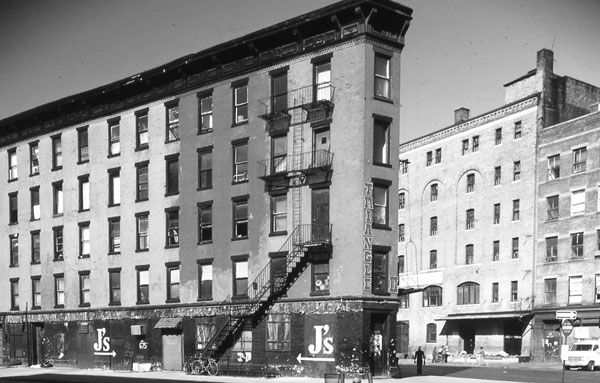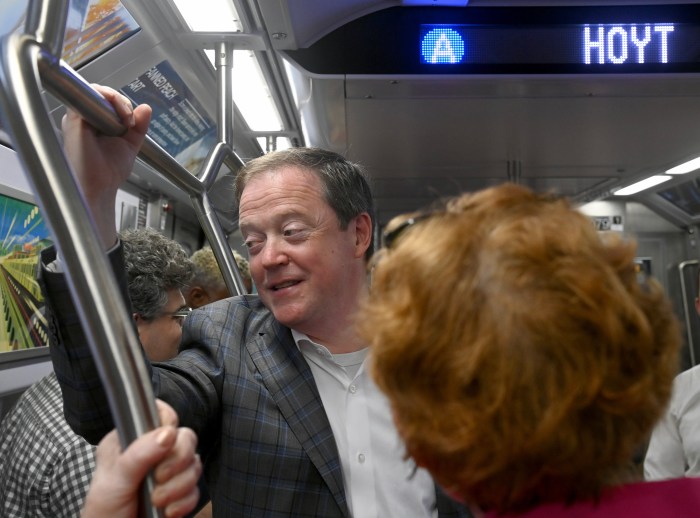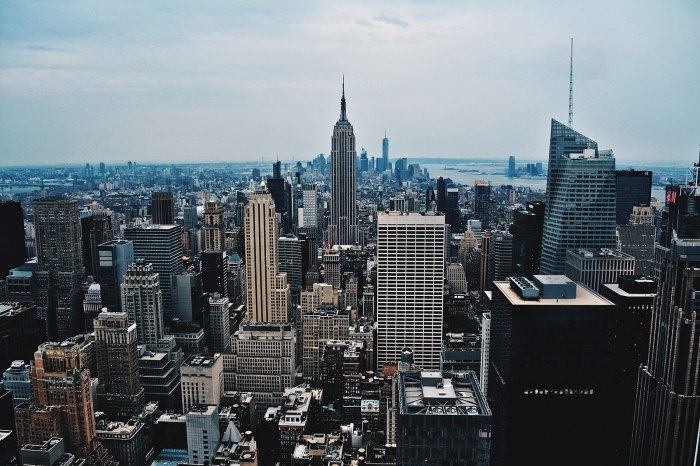BY ANDREW BERMAN | The end of one year and the start of another is always a good time for reflecting back and looking forward. So, too, is the end of one mayoral administration and the beginning of another, especially when considering progress on neighborhood historic preservation efforts.
The Greenwich Village Society for Historic Preservation has been doing just that kind of reflection, and frankly, we’ve been surprised by what we found — both in terms of how much progress has been made in securing landmark and zoning protections, and how much of our neighborhoods still remain vulnerable to inappropriate demolition and development.
For example, over the last 10 years, we’ve been able to help secure landmark designation of more than 1,000 buildings in the Village, East Village and Noho, as well as community-friendly, “contextual” rezonings of nearly 100 blocks. This amounts to a virtual small city of preservation in our ever-changing metropolis.
The new landmark designations we’ve helped secure over the past decade include eight new historic districts or district extensions extending across our neighborhoods — one in the Meatpacking District, two in the West Village, one in the South Village, two in Noho, and two in the East Village. A ninth historic district we have proposed in the South Village will be voted upon before the end of the year, and a tenth historic district, also in the South Village, is supposed to be considered directly thereafter.
With these new designations, we expanded the Greenwich Village Historic District for the first time since 1969, protecting previously vulnerable parts of the West and South Village; extended landmark protections to almost the entirety of Noho; and increased tenfold the historic district protections in the East Village.
We also helped secure individual landmark designation for more than 40 buildings. Among them are more than a dozen early 19th-century houses in the far West Village and East Village, in Hudson Square and near Washington Square. These individual landmarks also included industrial complexes like the West Village’s Westbeth and the former Wheatsworth factory near Avenue D; modernist masterpieces like the I.M. Pei-designed Silver Towers complex and its Picasso sculpture; historic former schools and synagogues in the East Village, sailors’ hotels in the West Village, and department stores on 14th St.; and cultural landmarks like Webster Hall and the former Triangle Shirtwaist Factory on Washington Place, just to name a few. (You can get more details on all these landmark designations at www.gvshp.org/10.)
These new designations cover huge swaths of our neighborhood that had been passed over by a prior generation’s efforts to preserve our architectural and cultural heritage.
But landmarking is just one piece of the puzzle when it comes to preserving our neighborhoods. A surprisingly large portion of the Village and East Village also had totally inappropriate zoning that encouraged hotel or dormitory development of a vastly outsized scale.
That’s why we also fought hard over the last 10 years to secure four different contextual rezonings — two in the East Village, covering nearly the entire neighborhood, and two in the West Village. These rezonings established strict height limits for new development where none existed before, and eliminated zoning incentives for dormitory or hotel development.
These landmarking and zoning protections will pay dividends for decades to come, as they preserve the human scale and historic character of our neighborhoods while preventing inappropriate demolitions and out-of-character new construction.
We saw some of the benefits right away. In the West Village, the rezoning blocked an oversized hotel planned on Perry St. and an out-of-context mixed-use project on Charles St. In the East Village, the rezoning will help ensure that we never see construction of another 26-story dorm like New York University’s Founders Hall, built on the site of the old St. Ann’s Church on E. 12th St.
There were some even more dramatic victories, as well.
In the Meatpacking District, we blocked a zoning variance that would have allowed a 500-foot-tall tower at Washington and W. 13th Sts. On Bleecker St. in the South Village, we blocked N.Y.U.’s plans for a 400-foot-tall hotel and office tower, partially through landmark designation of the Silver Towers complex. And at 13th St. and Fifth Ave., we helped convince The New School to drop plans for an enormous 400-foot-tall building that would have required zoning variances and been roughly twice the size of the building eventually constructed on that site.
Each of these planned developments would have been the tallest ever built in the Village.
Of course we did not stop every bad development. But even when we didn’t, we moved the needle considerably.
At Chelsea Market, after significant pushback, the original plan for additions to that historic complex were reduced considerably in size, a proposed hotel removed, the original outlandish designs for the additions made more contextual, and additional funding provided for long-promised affordable housing. The project was still wrong, but considerably less so due to forceful opposition.
At the Rudin development on the former St. Vincent’s Hospital site, though the rezoning was passed over our objections, after a considerable outcry, six historic buildings originally slated for demolition were instead saved and reused.
And while we are now in court seeking to block the N.Y.U. 20-year expansion plan, stiff resistance helped lead to a nearly 25 percent reduction in that plan’s size, and the elimination of the aforementioned proposed 400-foot-tall Bleecker St. tower.
Of course, there’s no denying there have been painful losses, as well, ranging from beloved neighborhood businesses, to historic buildings like the Provincetown Playhouse and Apartments, to critical institutions like St. Vincent’s.
But over all, the progress we have made over the last decade, during one of the most development-friendly mayoral administrations in history, has been undeniable.
Of course, the enormous hurdles we still face are equally formidable.
Recently enacted state legislation allowing the sale of millions of square feet of “air rights” from the Hudson River Park opens a potential Pandora’s Box of oversized development along our neighborhood’s western edge.
And in spite of our considerable advances over the past 10 years, large stretches of our neighborhood remain without landmarks protections, including most of the East and South Village — though the latter may soon change with landmark designations promised by the city before the end of the year. Inexplicably, most of University Place and the surrounding blocks also still lack landmark protections, as does virtually all of W. 14th St. and most of W. 13th St.
Large stretches of our neighborhood are also still zoned to allow out-of-scale development and encourage hotel and dorm construction. For example, under the existing zoning, N.Y.U.’s Vanderbilt Hall Law School on Washington Square South could today be replaced by a 300-foot-tall dormitory.
There’s other critical work to be done, as well. We need to discourage the proliferation of chain stores while preserving our valued independent businesses and arts spaces, which add so much to the character of our neighborhood. And we need to fight well-funded misinformation campaigns by the Real Estate Board of New York that portray landmarking as an enemy of affordable housing and economic vitality — assertions which, if not thoroughly challenged, will affect public opinion and policy.
The mayor, City Council leadership and borough president will change shortly, but the current robust real estate market and powerful developer lobby probably won’t change anytime soon. Thus, in the years ahead, we can expect to find new opportunities for further progress on the preservation front, but also considerable new and ongoing challenges.
Which means now is the time for us to recommit ourselves to the fight to preserve our neighborhoods. Doing so will allow us, during the next mayoral administration, to achieve more preservation progress and success. Not doing so will almost certainly mean more irreversible losses for our neighborhood that we would inevitably deeply regret.
Berman is executive director, Greenwich Village Society for Historic Preservation


















